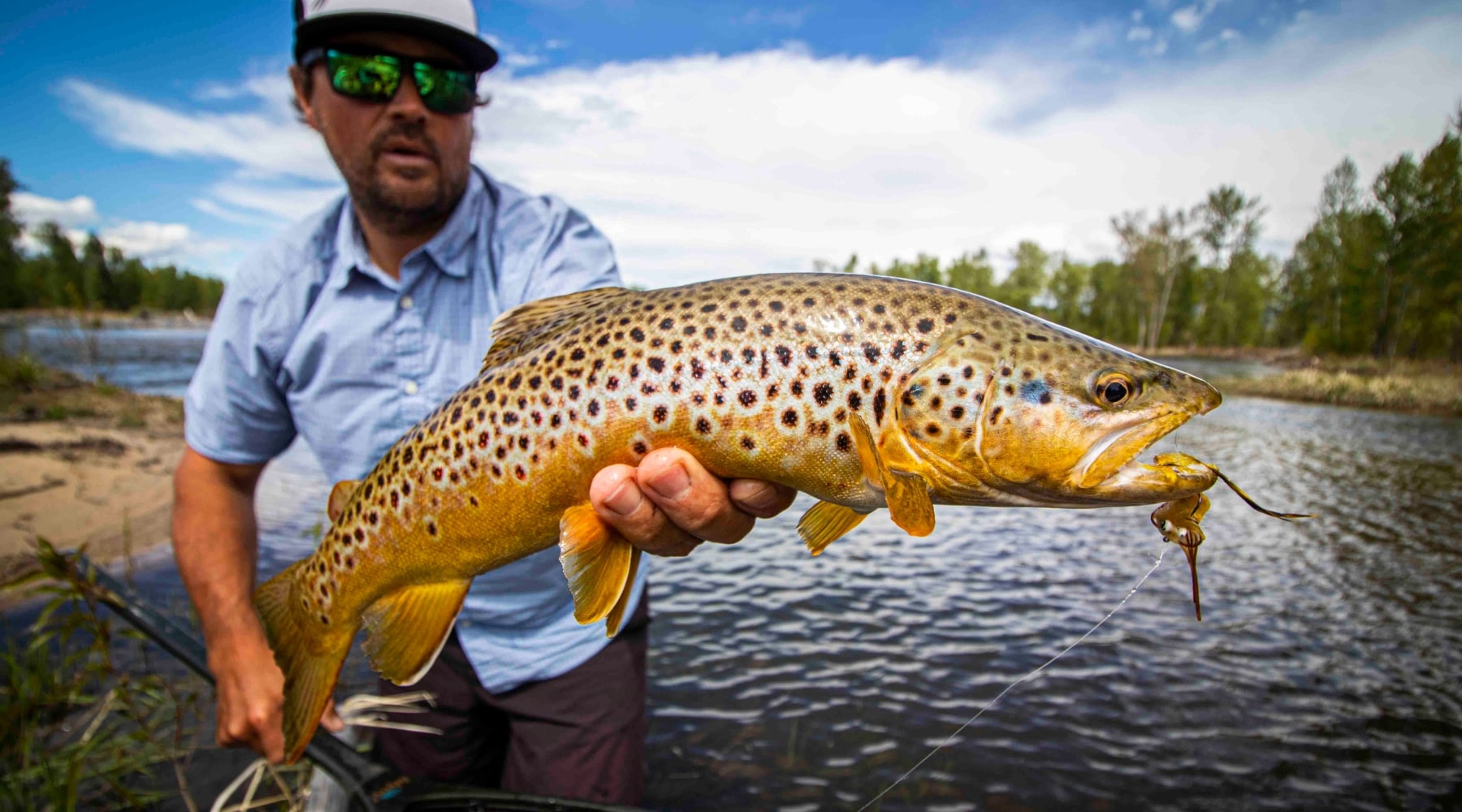
What's in our Fly Boxes for Late Summer Fly Fishing in Montana
Late summer fly fishing in Montana is synonymous with long days, low water, and dry-fly–sipping trout. The “dog days” of summer in Montana (late July through September) are a unique time to fly fish, requiring the right flies and tackle to find success. River flows are typically low and crystal clear, with wary trout creating technical opportunities. Now more than ever, having the right flies is crucial for late-summer fly fishing in Montana. Here’s a look inside our Missoula fly fishing guides’ fly boxes this time of year.

1. Terrestrial Patterns
Without a doubt, terrestrial patterns like grasshoppers, ants, and beetles dominate trout diets in late summer. When the coveted summer hatches of stoneflies and mayflies start to recede, terrestrials take their place. Trout go from targeting aquatic hatches to searching for big bugs falling into the water. This seamless transition typically takes place in mid-July, as we swap our summer stonefly boxes for grasshopper imitations.
Be prepared to fly fish two ways in late summer in Missoula:
- Hopper-dropper fishing with large foam patterns.
- Dry-fly fishing with small terrestrials along cutbanks and structure.
Most of our Missoula fly fishing guides start by fishing large hopper imitations early in the season. Large tan (and even green) hopper fly patterns in sizes #8–12 often fool trout just starting to notice grasshoppers. Our favorite hopper patterns early on include the Sweetgrass Hopper, Henneberry Hopper, and Juicy Hopper. Fish them along grassy banks and structure, either dead-drifted or twitched. Rarely do hoppers hit the water gracefully—they squirm and kick, often eliciting explosive eats from trout.
As the summer goes on, large, wary trout wise up to the big foam flies. That’s when smaller terrestrials shine. In August through September, we turn to patterns like the Morrish Hopper, Panty Dropper, and Hop-Drop-&-Roll in sizes #12–16. Small beetle and ant patterns can also be deadly, though they’re often overlooked. Our favorites include the Fat Albert, Ground Beetle, Green River Ant, Ant Acid, and Parachute Ants. These “code breakers” fool picky late-summer trout.

2. Nocturnal Stoneflies
Nocturnal stoneflies provide some of the most underrated and overlooked dry-fly fishing in late summer. Unlike goldenstones and salmonflies, these large, brown stoneflies emerge and mate at night. Many anglers never see them, but their shucks on rocks and wood reveal the hatch.
Trout target nocturnals during the first few hours of the day, from dawn to mid-morning, and again in the evening. Fishing nocturnals along banks, riffly drop-offs, and deep buckets produces violent eats from trout hunting clumsy stoneflies. Our go-to nocturnal patterns include the Water Walker, Chubby Chernobyl, and Plan B. Don’t be afraid to twitch or skate them—nocturnals rarely go down without a fight.

3. Mayflies
Late summer into early fall brings some of the best mayfly fishing of the year. As terrestrial activity wanes, our focus shifts to small, technical mayfly hatches.
Tricos: Missoula’s trico hatch is among the most technical—and rewarding—of the year. Long leaders, light tippet, and perfect drifts are required. Look for pods of big rainbows sipping in long, slow tailouts. Spinner falls typically occur from 7–10 a.m. For flies, we like trico spinners in sizes #18–22 such as Tucker’s Twiggies, Splitsville Spinners, and CDC Spinners on 5.5x or 6x tippet. Emergers and drowned spinners also work.
Mahogany Duns: One of the best-kept late-season secrets, mahoganies (sizes #14–16) hatch prolifically from September through October. These rusty-brown mayflies are especially productive on the Clark Fork and Bitterroot rivers. They hatch in the afternoons, but fishing emergers and nymphs earlier in the day pays off. Our favorite dries include the Last Chance Cripple, Brindlechute, Purple Rooster, and Para-Wulff.
Hecubas: Sporadically hatching through August and September, hecubas are a large drake (#10–12) and one of Missoula’s most underrated hatches. They often appear on cool, cloudy, or rainy days. Start the day with nymphs like Pheasant Tails, Yellow Spots, and Duracells, then switch to large dries in the afternoon. Trout crush patterns like the Brindlechute, Purple Haze, and Hecuba spinners/cripples.

4. Nymphs
Late summer nymphing can be highly productive when you adjust with the hatches. Start the day with nocturnal stonefly nymphs like Pat’s Rubberlegs, TJ Hookers, and Explosion Stones in sizes #8–12. Fish them in riffles and deeper runs.
As the sun rises and trout turn selective, switch to smaller nymphs. During trico season, dark perdigons and drowned spinners excel. Other staples include Pheasant Tails, Hare’s Ears, and Duracells. On sunny days, flashy nymphs like Spanish Bullets and bright perdigons in sizes #14–18 perform well. Fish them 24–60” deep on 3–5x tippet.

5. Streamers
Streamer fishing is often overlooked in late summer but can still produce quality fish. Low, clear, warm water generally makes trout less aggressive, but in cooler, faster runs, streamers still work. Small, flashy patterns are best. Our favorites include the Sparkle Minnow, Kreelex, and Lil’ Kim.

Late summer fly fishing in Montana offers some of the most exciting and technical fly fishing of the year. From hoppers and ants to tricos and hecubas, having the right flies in your box makes all the difference.
Whether you’re chasing picky risers or prospecting along grassy cutbanks, the right pattern can turn a tough day into a memorable one. Stop by our Missoula fly shop or browse our online fly shop to stock up on the flies and gear our guides trust during the dog days of summer.
SHOP OUR ONLINE FLY SHOP
SHOP
WITH US
| Shop Online
Fish
WITH US
| Guided Fly Fishing Trips
stay
WITH US
| Lodging Packages
OUR NEWSLETTER
Sign Up For Our Newsletter & Receive 10% OFF Your Next Order
Join our mailing list for expert information on fly fishing, deals and discounts, and more information from our Missoula fly shop!
